#Falsifiability and Reproducibility
Explore tagged Tumblr posts
Text
Rigorous Methods of Inquiry and Their Role in Achieving Objectivity
Rigorous methods of inquiry are systematic approaches to investigation that aim to eliminate bias, enhance reliability, and allow us to achieve objectivity in our understanding of the world. These methods are used across disciplines, from philosophy to science, and each method emphasizes a set of standards that help ensure conclusions are as objective and valid as possible.
Here are some key rigorous methods of inquiry and how they contribute to objectivity:
1. Empiricism (Empirical Method)
Description: Empiricism is the method of acquiring knowledge through direct observation or experimentation. It emphasizes the collection of data through sensory experience, particularly in the natural sciences.
Contribution to Objectivity:
Data-Driven: Empiricism relies on observable and measurable evidence, reducing reliance on subjective opinions or personal biases.
Reproducibility: Findings must be reproducible by others, ensuring that the knowledge is not based on individual interpretations.
Falsifiability: Theories are tested and must be falsifiable, meaning they can be proven wrong if evidence contradicts them. This constant testing refines and improves knowledge, moving it toward objective truth.
2. Rationalism (Deductive Method)
Description: Rationalism involves reasoning and logic to derive knowledge, particularly through the deductive method. It involves starting with general principles and drawing specific conclusions from them.
Contribution to Objectivity:
Internal Consistency: Logic is independent of personal experience and can be universally applied. The emphasis on logical consistency helps ensure that conclusions follow from premises without bias.
Clarity in Argumentation: Deductive reasoning breaks complex problems into smaller, well-defined parts, helping eliminate subjective assumptions.
Mathematical and Philosophical Proofs: Formal systems in mathematics and logic are often considered paradigms of objectivity because they rely on clear, universal rules.
3. Scientific Method
Description: The scientific method is a process that involves making observations, forming hypotheses, conducting experiments, and analyzing results to draw conclusions. It combines both empirical and rational methods.
Contribution to Objectivity:
Controlled Experiments: By controlling variables, researchers can isolate specific factors and establish causal relationships, limiting external biases.
Peer Review: Scientific findings are subject to scrutiny and validation by the wider scientific community, ensuring that personal biases of individual researchers are minimized.
Statistical Analysis: The use of statistical methods allows for the quantification of uncertainty and the identification of patterns that are more likely to reflect objective reality than random chance.
4. Phenomenology
Description: Phenomenology is the study of subjective experience and consciousness. It involves a rigorous analysis of how things appear to us, but with careful reflection on how these perceptions relate to reality.
Contribution to Objectivity:
Bracketing: In phenomenology, "bracketing" is the practice of setting aside personal biases, assumptions, and presuppositions to focus purely on the phenomena being experienced. This helps eliminate subjective distortions in the investigation of consciousness and experience.
Universal Structures of Experience: While phenomenology studies subjective experiences, it aims to identify structures of experience that are common across individuals, providing insights that transcend personal perspective.
5. Critical Thinking and Analytical Philosophy
Description: Critical thinking involves rigorous analysis, evaluation of evidence, and the logical assessment of arguments. Analytical philosophy, a branch of philosophy, uses precise argumentation and linguistic clarity to assess philosophical problems.
Contribution to Objectivity:
Identifying Fallacies: By learning to identify logical fallacies and cognitive biases, critical thinking reduces the influence of faulty reasoning on conclusions.
Clear Definitions: In analytic philosophy, precision in language helps to clarify concepts and avoid ambiguities that could lead to subjective misinterpretations.
Systematic Doubt: By questioning assumptions and systematically doubting unverified beliefs, critical thinking helps individuals avoid dogma and achieve more objective conclusions.
6. Historical Method
Description: The historical method involves the critical examination of historical sources, contextualizing information within a time period, and synthesizing narratives based on evidence.
Contribution to Objectivity:
Source Criticism: Historians critically assess the reliability, bias, and perspective of sources, weighing them against one another to form a balanced, objective view of historical events.
Triangulation of Evidence: By using multiple sources and comparing them, historians reduce reliance on any one biased or incomplete account, moving closer to an objective understanding of history.
Contextualization: Placing events in their proper historical context helps avoid presentism (judging the past by modern standards) and enhances objectivity by understanding events within their own framework.
7. Hermeneutics
Description: Hermeneutics is the study of interpretation, particularly of texts. It involves analyzing and interpreting language, meaning, and context, commonly used in fields such as theology, literature, and law.
Contribution to Objectivity:
Interpretive Framework: Hermeneutics encourages the awareness of the interpreter's own biases, enabling a more reflective and critical approach to understanding texts.
Contextual Sensitivity: By emphasizing the importance of context, hermeneutics helps ensure that interpretations are not anachronistic or overly influenced by the interpreter’s preconceptions.
Dialectical Process: It involves a dialogue between the reader and the text, promoting a balanced, evolving understanding that seeks to approximate objectivity.
8. Game Theory and Decision Theory
Description: These methods involve mathematical models of decision-making, often under conditions of uncertainty. Game theory examines strategies in competitive situations, while decision theory studies rational choices.
Contribution to Objectivity:
Rational Decision-Making: By using formal models, these methods help individuals make decisions that are logically consistent and optimal given the available information, removing subjective impulses.
Objective Payoffs and Strategies: Game theory provides objective tools to analyze strategies that lead to optimal outcomes, independent of personal preferences or biases.
9. Quantitative and Qualitative Research
Description: Quantitative research uses numerical data and statistical methods to find patterns and correlations, while qualitative research explores meanings, experiences, and narratives in a more interpretive manner.
Contribution to Objectivity:
Quantitative Research: The use of large datasets and statistical analysis minimizes individual biases, offering a more objective understanding of phenomena. Methods like random sampling and control groups add rigor to research findings.
Qualitative Research: While more interpretive, qualitative research can still strive for objectivity through triangulation, thick descriptions, and transparency in the research process.
Rigorous methods of inquiry, from empiricism and rationalism to critical thinking and statistical analysis, provide frameworks that enhance objectivity by reducing personal bias, improving reproducibility, and systematically analyzing evidence. Each method contributes to objective understanding by ensuring that conclusions are not shaped by subjective perspectives or unverified assumptions, and instead rely on clear, structured, and replicable processes. These methods are indispensable in fields ranging from science to philosophy and help us approach truth in a methodical, unbiased manner.
#philosophy#epistemology#knowledge#learning#education#chatgpt#ontology#metaphysics#psychology#Objectivity in Inquiry#Empiricism and Rationalism#Scientific Method#Critical Thinking#Hermeneutics and Interpretation#Quantitative and Qualitative Research#Falsifiability and Reproducibility
7 notes
·
View notes
Note
🔥 Magic in fiction
if your magic is straightforwardly falsifiable, teachable, experimentally reproducible, etc. then that's not magic, that's science with wands
175 notes
·
View notes
Text

Frayed Knots
Fairly OddParents ~ (July 2017 - Ongoing)
“Ohh, just think of it, Anti-Wanda! A new High Count. A new system structure. No more stupid rules! Now, how beautiful would that be? ... Will you help me?”
Anti-Cosmo backstory longfic
Drama, Angst, & Romance
First-person POV
Dead Dove
Summary
Since he was 8 years old, Anti-Cosmo has dreamed of becoming a father in a time period when Anti-Fairies are forbidden from reproducing. Determined to find a loophole in the cruel law, he searches desperately for a way that Anti-Fairies might reproduce without being forcibly bound to the whims of their Fairy counterparts... ... and when he gets his hands on the information he desires at last, he's forced to make a painful choice: Pretend he never uncovered the forbidden secret that he did, or put his long-sought knowledge to use at the expense of those he loves. Yeah, I think we all know where this is going. Full steam ahead...
Not Rated; Creator Chose Not to Use Archive Warnings
Read on FFN | Read on AO3
Chapter Recaps | Anti-Fairy Character List
Cloudlands AU - Detailed warnings & other AU info
More Fairly OddParents 'fics
This work has a largely T tone. Borderline M for themes of sexuality, reproduction, bat biology, infidelity, grooming, abuse, war, and just bad choices all around. E-rated versions of some chapters are posted as separate works- Not directly in this one.
Anti-Cosmo-centric longfic with a focus on:
- Falsifying your betrothal ceremony as a child and lying for life is fine, right? (No, he didn't pick Anti-Wanda... ohhh, dear). - Navigating sociosexual Anti-Fairy culture as a panromantic graysexual (Diagnosed magical bipolar parallel & hypersexual). A serious look at how rough life with hypersexuality can be, even if your future wife thinks it's kinda hot. - Anti-Cosmo's journey to becoming High Count, overthrowing his step-father Anti-Bryndin in the process - Questioning your faith in a culture that pushes the Fae zodiac in every aspect of life, including childhood betrothals, the single creature you're allowed to shapeshift into, and mental health treatments - A wide variety of abuse (and recovery... and repeating the cycle). Oh, and there's extreme abuse from a past life mixed in there? And no one would ever believe you? This gets better and better! - Shout-out to the D Plot of founding the genie conservation program - Demisexual brain go brrrr - The war over godkids from "Balance of Flour" (Season 7). Canon Tiddlywinks face-off, anyone? - Turning your mind and body over to the Water spirit, who got kicked out of cosmic game night for being a massive brat who kept pushing his mediums to their limit until they broke... Wait, what? - Forming a tight relationship with the Head Pixie: a close friend of Anti-Bryndin's reluctant to accept a new leader (and he's the man Anti-Cosmo apparently raised a child with, if Jorgen's slideshow in "Fairly Odd Baby" is to be believed... Let's talk about it!) - And the glacial-level slow burn that is Anti-Cosmo/Anti-Wanda
Read on FFN | Read on AO3 | Blog Tag
"All I've ever wanted, see, was to tell you honestly... I'd do anything for you! ... I'd do absolutely anything for you." (x)
#Fairly OddParents#FOP#Anti-Cosmo#Frayed Knots#FOP fanfic#Cloudlands AU#Baby we are SO back!!#The bat with the hat#Bat cube and associates#ridwriting#apparently art#FAIRIES!#ridwork guides#ridspoilers#Anti-Cosmo's art was the first I did and I wasn't able to recreate this zoom effect on any others :'D That's okay tho#fic announcement#FOP fanart#anti fairies#anti cosmo#dead dove#Long post
21 notes
·
View notes
Text
When in search of old media, it's always been exemplified for me that emulators, piracy and the like are absolutely necessary for the future curation and preservation of digital media as art. It's so deceitful for businesses to not only misunderstand the purpose of such practices, but actively seek to quash it under the guise of property rights and monetary loss which has been proven time and time again to be a falsified claim. We have literal Jesus powers at our finger tips to copy, recreate and reproduce content without harming the original, and that's somehow been sold to everyone as thievery. And now begins a dark age where streaming services, something that was sold to everyone to make content updated, higher quality and more widely available, now believe they have the right to withhold said content even if it's at no monetary loss to them and refuse to relinquish the rights, probably on some pipe dream of a future remake in the works that nobody asked for.
It's so infuriating to me that for some older educational kids shows that never got the star treatment for DVD releases are basically lost to time unless somebody with a VHS recorder decided to actively record it at the time of its release AND digitize their collection to be available online. Even when I was in game design college, they had all the legal access to AAA games, but to get the really old stuff to teach students where games originated from? All free emulations provided by some rando online who decided to give a shit, that was the only way to access things like Adventure (1980) or Spacewar (1961). How much art are we losing because these philistine roadblocks continue to push the idea that only they, as the holy arbiters of great art, get the privilege to decide who gets access to what? I ain't falling for it and neither should you. Yohoho.
#rant#bite kill maim#anyways if anyone can find me torrents for polka dot shorts and elliot moose id be eternally grateful#piracy
58 notes
·
View notes
Text
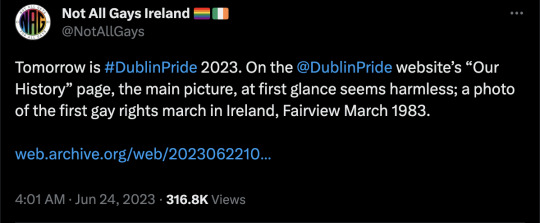






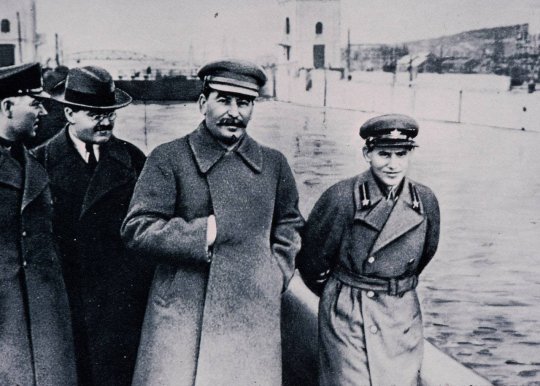

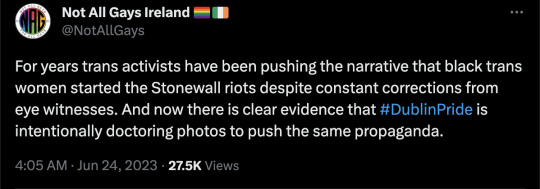
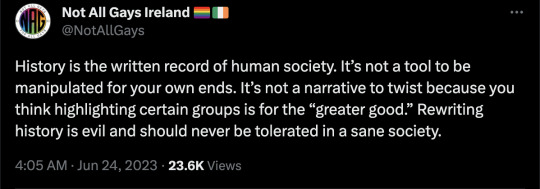
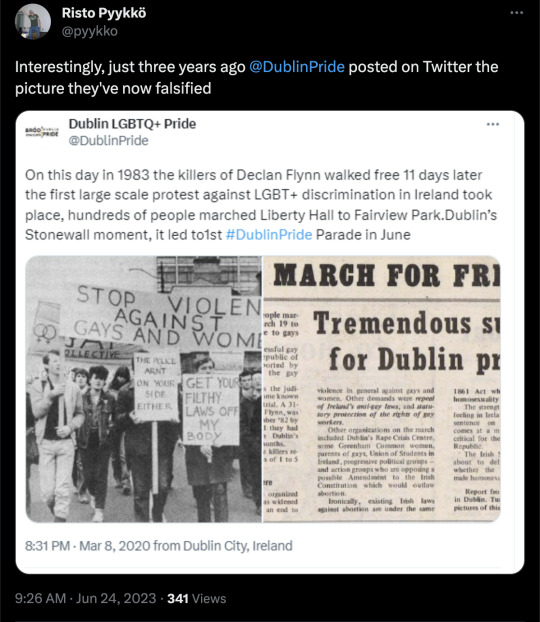
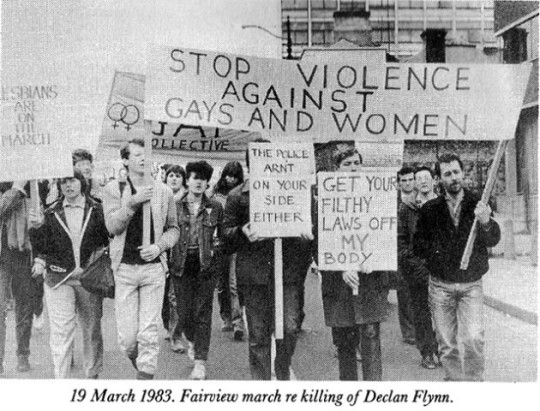
"Every record has been destroyed or falsified, every book has been rewritten, every picture has been repainted, every statue and street and building has been renamed, every date has been altered. And that process is continuing day by day and minute by minute. History has stopped. Nothing exists except an endless present in which the Party is always right." -- George Orwell, "NIneteen Eighty-Four"
Unethical, dishonest and sinister.
When multiple historians called out the 1619 Project's pervasive historical fraud, known compulsive liar, Nikole Hannah-Jones justified it as "reshaping public memory." That is, it isn't true, but it should be true, and people should believe and insist that it's true.
Dublin Pride has since added some text to their page to handwave the dishonesty. However, anyone using the site and its assets as a historical reference - and why wouldn't they, when it's the official site for Dublin Pride - will be reproducing the images they want them to have, not the ones that are factually accurate. So any news sites that source from their site will be, knowingly or not, perpetuating Dublin Pride's rewrite of their own history.

#Dublin Pride#pride march#gay rights#gay rights march#rewriting history#Orwellian#memory hole#gender ideology#queer theory#gay erasure#revisionist history#historical revisionism#fraud#woke homophobia#Malcolm Michaels Jr.#religion is a mental illness
144 notes
·
View notes
Text
Research Pt11
Christine Chubbuck.
// Mentions of Suicide, most information has been taken from the Christine Chubbuck Wikipedia, meaning it could be falsified or exaggerated, so please take it with a grain of salt.
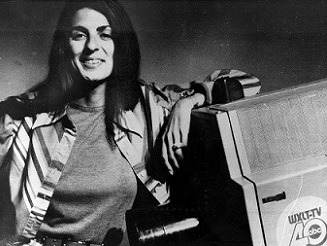
Born in 1944, Christine was an American news reporter who worked for the stations WTOG and WXLT-TV in Sarasota Florida.
Throughout her life, Chubbuck was described to of had a rocky history with relationships.
During her time at Laurel School for Girls, she had jokingly formed together a club for girls who "didn't have dates on Saturday Nights".
Along with having a boyfriend when she was 21, him being in his 30s, of which her father did not approve of.
And during her time at WXLT-TV she was described to have had an unrequited crush on her coworker George Peter Ryan, who at the time was already involved with Andrea Kirby, a close friend of hers.
Chubbuck was very open with her family, specifically mother and brothers, about her mental health and depression, with her mother citing that her struggle with forming intimate relationships may have contributed heavily to her depression, quote:
"Her suicide was simply because her personal life wasn't enough".
Chubbuck had also lamented to her coworkers that she was going to soon be 30 years old and she was a "virgin who's never been on more than 2 dates".
Because of these instances, she had tried to keep close friendships with her coworkers, however they had described her as blunt, self-deprecating and one to never take compliments when given.
A year before her death, she had to have an ovary removed due to pain and a potential tumour, in which the doctor had informed her that she would only be able to reproduce within the next two years.
Only a week before her death, she had informed the Night News Editor, Rob Smith, that she had brought a gun with her to the station and she'd planned on committing suicide - saying something to the effect of "Wouldn't it be crazy if I blew myself away on air?" - but he had brushed it off as a sick joke.
And just days before her death, she had hosted a party with her friends and coworkers, among which Craig Sager had attended, citing that Chubbuck had appeared more lively than she'd ever been, and that it was a welcome change.
But in hindsight, he lamented that it was intended to be her final goodbye to everyone before her eventual suicide.
On the fateful morning of July 15th in 1974, Chubbuck had specifically requested that she was to host that morning's Suncoast Digest, a roughly 5 minute segment of the morning news to discuss the community affairs, along with requesting that the broadcast be taped, a practice that was rarely done at the time due to cost.
She had covered upwards of three national news stories and a local shooting that happened only the previous day at the Beef & Bottle Restaurant in the Sarasota Bradenton Airport.
However, the planned showing of the film reel of said event had jammed during its attempted showing, which Chubbuck had shrugged off, returning to her script and quoting:
"In keeping with the WXLT practice of presenting the most immediate and complete reports of local blood and guts news, TV 40 presents what is believed to be a television first. In living color, an exclusive coverage of an attempted suicide."
Before she would then withdraw a 38-Cal Revolver from her bag, seated in her lap, point it behind her right ear and pull the trigger, her body limping.
The technical director had quickly faded the live broadcast to black, a Public Service Announcement quickly playing afterwards, followed by a movie.
After the shooting had occurred, TV-40 Director, Mike Simmons, had discovered Chubbuck's script, which had detailed her final words and a third person account of her shooting and what would be said afterwards to other stations, quote:
"She had written something like "TV 40 news personality Christine Chubbuck shot herself in a live broadcast this morning on a Channel 40 talk program. She was rushed to Sarasota Memorial Hospital, where she remains in critical condition."
This request would be fulfilled as it was the script used during reports of the incident.
Chubbuck was rushed to the Sarasota Memorial Hospital, wherein she was pronounced dead 14 hours later.
Preceding the incident, TV-40 would air rerun episodes of Gentle Ben in place of the Suncoast Digest.
The tape of the incident is widely believed to be lost media, with a few instances of it surfacing, only to be debunked, and Chubbuck's family are said to have destroyed all tapings of the incident, all except for one, which is currently in possession of a "very large law firm", as cited by Robert Nelson's widow, Mollie.
The incident has gained a lot of traction within media, most notably as Chubbuck was cited as the first ever person to have committed suicide on live TV, akin to incidents that of R. Budd Dwyer and Ronnie McNutt.
However only in 2016 did a movie premier at the Sundance Festival detailing the events of Chubbuck's death, by the name of 'Christine' premiered alongside 'Kate Plays Christine', detailing actor Kate Lyn Sheil as she prepares to take on the role of Chubbuck in a hypothetical film.
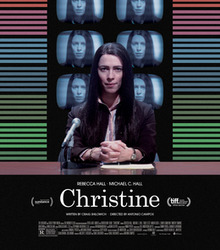
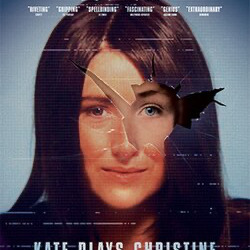
Christine stars Rebecca Hall as Chubbuck as she encounters great adversity and challenges in the week(s) leading up to her eventual suicide, and it makes a great focus of the ideology of "If It Bleeds, It Leads".
I say this very loosely, as we may never know what Christine's intentions were, but from personal belief I say that perhaps her death was intended to be a middle finger to the dramatisation and exploitation of media, especially when it comes to sensitive and tragic subjects.
However, perhaps one of the greatest ironies of Christine's life was her death, as it had only served to prove her point of the media being so grimly obsessed with the grim and macabre, and I'm not exactly helping that by making this post.
Rebecca Hall had cited that, in Chubbuck's final words, she had remained a great reporter, maintaining the level of suspense in reporting what would become her own death.
"Exclusive coverage of an attempted suicide."
Whether or not Christine had intended for her death is unclear, however given the nature of it (her written script and taping of the broadcast) it would be fair to say that it was atleast premeditated.
Christine (2016) is a brilliant movie, absolutely worth a watch, and it greatly humanises Chubbuck outside of a simple sentence headline, or a citation on a "Top 10 most shocking moments on Live TV" article, and Rebecca Hall's performance is greatly commendable.
2 notes
·
View notes
Text
In an excellent essay on Disneyland as "degenerate Utopia" ("a degenerate Utopia is an ideology realized in the form of myth"), Louis Marin analyzed the structure of that nineteenth-century frontier city street that receives entering visitors and distributes them through the various sectors of the magic city. Disneyland's Main Street seems the first scene of the fiction whereas it is an extremely shrewd commercial reality. Main Street—like the whole city, for that matter—is presented as at once absolutely realistic and absolutely fantastic, and this is the advantage (in terms of artistic conception) of Disneyland over the other toy cities. The houses of Disneyland are full-size on the ground floor, and on a two- thirds scale on the floor above, so they give the impression of being inhabitable (and they are) but also of belonging to a fantastic past that we can grasp with our imagination. The Main Street façades are presented to us as toy houses and invite us to enter them, but their interior is always a disguised supermarket, where you buy obsessively, believing that you are still playing. In this sense Disneyland is more hyperrealistic than the wax museum, precisely because the latter still tries to make us believe that what we are seeing reproduces reality absolutely, whereas Disneyland makes it clear that within its magic enclosure it is fantasy that is absolutely reproduced. The Palace of Living Arts presents its Venus de Milo as almost real, whereas Disneyland can permit itself to present its reconstructions as masterpieces of falsification, for what it sells is, indeed, goods, but genuine merchandise, not reproductions. What is falsified is our will to buy, which we take as real, and in this sense Disneyland is really the quintessence of consumer ideology.
–Umberto Eco, "Travels in Hyperreality"
4 notes
·
View notes
Text

A cabinet card image of the falsified chess automaton “Ajeeb the Wonderful”
Author
Falk, New York (photographer)Description
English: Cabinet card image of chess automaton "Ajeeb the Wonderful". Cropped version. 1886. TCS 1.183, Harvard Theatre Collection, Harvard UniversityDate1886CollectionHoughton LibraryNotesThis is a media file that Houghton Library believes to be in the public domain of the United States. This applies to a work published before January 1, 1923, or the unpublished work of an author who died more than 70 years ago. Houghton Library and Harvard University claim no rights in this photographic reproduction of the work, and the image is free to download and reproduce for any use, commercial or non-commercial, without any further permission required. We request that where these media files are used, the Houghton Library is credited as the source of the materials. Please include this citation: "TCS 1.183, Harvard Theatre Collection, Harvard University" as its source. In the event that any of the media files infringes your rights or the rights of any third parties, or file is not properly identified or acknowledged, we would like to hear from you so we may make any necessary alterations. In this event, please contact: [email protected] 1.183, Harvard Theatre Collection, Harvard University
2 notes
·
View notes
Text
7.2 Today's Art
While reading McLuhan, the most obvious connection/application to today’s art world and society was to Artificial Intelligence being used to create art. McLuhan argues that the medium is the limiting factor of any message; the message is solely inhibited by the capacity or function of the medium. When considering AI art, this is clear through the fact that there are some things that AI art cannot replicate like humans can. Many AI models struggle to depict human hands accurately. When viewing/consuming/using AI art, McLuhan would impress that we should consider the function of AI and how AI itself distorts the art it creates. This can include the various ethical concerns surrounding AI such as stealing art from other artists without credit, or falsifying information through generative images.
The biggest insight I have gained from reading the authors from this week is to truly not take anything at face value anymore in regards to art or creation. Benjamin’s concept of the Aura drives home the necessity for the encapsulation of the history and context of artworks and a desire to retain their objectivity and uniqueness. Combining this with McLuhan’s idea of the medium being the message, we should continuously be evaluating and re-evaluating the ways we are given information through art. Is the aura of a piece still intact, and if it isn’t, can it still function successfully as a medium? And, like McLuhan insinuates, we cannot go backwards or remove the effects of the new technological advancements happening every day; in order to keep up with them we must learn to see through the veneer of the message and into deep consideration of the medium.
References
Benjamin, W. (2008). The work of art in the age of its technological reproducibility, second version. In M. W. Jennings, B. Doherty, & T. Y. Levin (Eds.), The Work of Art in the Age of Its Technological Reproducibility, and Other Writings on Media (E. Jephcott, R. Livingstone, H. Eiland, et al., Trans.). The Belknap Press of Harvard University Press.
McLuhan, M. (1964). The medium is the message. In Understanding media: The extensions of man.
2 notes
·
View notes
Note
Wilmon 44 & 45
44. What do they love about each other the most?
i think wille loves how simon understands him, or at least is open to understanding him, to the point that he's pretty much the only person around whom he can be himself, without simon judging him or expecting him to be "better" than he is (simon thinks he's more than good enough as he is). he loves simon's voice and musical talent, of course, and how he gives all of himself to help the people he loves, even to his own detriment. he loves how confident simon is, and how he doesn't take shit from anyone.
simon loves how earnest wille is. he loves that wille is the only person who will take care of him when he's running himself ragged trying to take care of everyone else. he loves how supportive wille is, whether over a choir solo or his political views. he loves that wille trusts his opinion even on situations outside his expertise, and trusts him to make his own decisions. he loves that he's the first person wille comes to for advice and comfort, even on matters unrelated to him, even though given his position in the social hierarchy, he doesn't need to involve simon at all-- but he still wants to.
("everything." that's the real answer to this question.)
45. How do they comfort each other when they are helpless to do anything about the situation?
so. let me get my nerd glasses on for a second. 8)
the concept of "love languages" is a very romantic notion but not really scientific at all. people are too complex and their personalities too plastic to reduce them to one or two ways of showing affection, and the research on this is pretty much inconclusive.
that said, fictional characters, especially ones with such limited canon as wille and simon have, are a bit easier to fit into a simple classification, and it can be fun to play with it. so i 10000% subscribe to the idea that wille's go-to (but not only!) form of showing affection is physical touch, and i think for simon it's an even combination of acts of service and words of affirmation. but they also have come to know the other, or at least the other's personality if not their life details, very well in the few months since they met in canon. so i think they have also come to know how to adapt to the other's needs regarding those love languages.
so basically, simon knows to give wille a hug or a caress when he needs support, on top of reassuring him with words. and wille knows to ask what simon needs, how he can help, and to show his support with actions on top of just offering physical comfort. it really is rather remarkable how we can already see this even in just the twelve episodes we've had in canon so far. and while the love languages might not be truly testable, reproducible, or falsifiable, it's fun to make such observations about fictional characters, in a "jane goodall studying chimpanzees in the wild" kind of way. ;)
(sorry this got so long. ask me about astrology next-- we'll be here for hours.)
50 OTP questions game | send me a question!
#young royals#young royals netflix#prince wilhelm#simon eriksson#wilmon#wilhelm x simon#wille and simon#hi there otp#simon x wilhelm#wille x simon#simon x wille#ask game#send me more plz!
18 notes
·
View notes
Text
Perspective of the haunted cybernetic False Saint
The capabilities/components for everything I have outlined already exist and are somewhat in effect. [Apart from some core adaptive algorithms and external loci, seeds and reproducible non modularity]. I think applications are in effect based on the evidence at hand and previous response times I have discerned (mostly at face value with consideration with misinformation techniques [now certainly in play to some degree] however with long term potentiation I still have the advantage due to retrospective cognition, exponential complexity generation [mitigated by biometry], reacting behaviorally, sub-vocally and non modally to layers of abstraction representing both past, present and futures perceived, imagined, falsified and real.
4 notes
·
View notes
Text
(From Wikipedia)
Wakefield published his 1998 paper on autism in the prestigious medical journal The Lancet, claiming to have identified a novel form of enterocolitis linked to autism. However, other researchers were unable to reproduce his findings, and a 2004 investigation by Sunday Times reporter Brian Deer identified undisclosed financial conflicts of interest on Wakefield's part. Wakefield reportedly stood to earn up to $43 million per year selling test kits. Most of Wakefield's co-authors then withdrew their support for the study's interpretations, and the General Medical Council (GMC) conducted an inquiry into allegations of misconduct against Wakefield and two former colleagues, focusing on Deer's findings.
In 2010, the GMC found that Wakefield had been dishonest in his research, had acted against his patients' best interests and mistreated developmentally delayed children, and had "failed in his duties as a responsible consultant". The Lancet fully retracted Wakefield's 1998 publication on the basis of the GMC's findings, noting that elements of the manuscript had been falsified and that the journal had been "deceived" by Wakefield. Three months later, Wakefield was struck off the UK medical register, in part for his deliberate falsification of research published in The Lancet, and was barred from practising medicine in the UK. In a related legal decision, a British court held that "[t]here is now no respectable body of opinion which supports [Wakefield's] hypothesis, that MMR vaccine and autism/enterocolitis are causally linked". Wakefield has continued to defend his research and conclusions, saying there was no fraud, hoax or profit motive. In 2016, Wakefield directed the anti-vaccination film Vaxxed: From Cover-Up to Catastrophe.
_______________
At the time of his MMR research study, Wakefield was senior lecturer and honorary consultant in experimental gastroenterology at the Royal Free Hospital School of Medicine (from 2008, UCL Medical School). He resigned in 2001, by "mutual agreement and was made a fellow of the Royal College of Pathologists", and moved to the US in 2001 (or 2004, by another account). He was reportedly asked to leave the Royal Free Hospital after refusing a request to validate his 1998 Lancet paper with a controlled study.
Wakefield subsequently helped establish and served as the executive director of Thoughtful House Center for Children, which studies autism in Austin, Texas, where, according to The Times, he "continued to promote the theory of a link between the MMR vaccine and autism, despite admitting it was 'not proved'." He resigned from Thoughtful House in February 2010, after the British General Medical Council found that he had been "dishonest and irresponsible" in conducting his earlier autism research in England. The Times reported in May 2010 that he was a medical advisor for Visceral, a UK charity that "researches bowel disease and developmental disorders".
_______________
Wakefield has set up the non-profit Strategic Autism Initiative to commission studies into the condition, and is currently listed as a director of a company called Medical Interventions for Autism and another called the Autism Media Channel.
Really disheartening to see people starting to forget what started the anti-vaxxer movement.
Its not just rich white people. Its not conspiracy theorists. It's not people who are blindly religious and condemn science.
It's all people who hate autistc people. It's straight anti-autistic ableism.
It's a movement that was started by a man who hated autistic people (autistic children specifically) so much that he used his experience as a physician to fake research that stated vaccines cause autism. That man's name is Andrew Wakefield. He's still claiming his proven-false claims are true. He was born in England but lives now in Texas. And he's STILL LEADING THE ANTI-VAX MOVEMENT.
The movemnt is inherently anti-autistic. Anti-Vaxxers willingly admit theyd rather their child be dead than autistic. Please do not erase our suffering when talking about this.
36K notes
·
View notes
Text
Science must outlive the PR cycle.
Modernization, as used today by industry lobbyists and public health officials, often amounts to a euphemism for deregulation: fewer checks, less transparency, and faster product pipelines with fewer questions asked. In contrast, Secretary Robert F. Kennedy Jr.’s approach to public health modernization is actual modernization—where rigorous science, true accountability, and unwavering public safety form the non-negotiable baseline.
The Kennedy Regulatory Bar isn’t a buzzword, and it’s certainly not a rhetorical device. It’s an operating philosophy grounded in scientific integrity and public duty. For those who understand regulatory policy only as an obstacle to commercial throughput, the Kennedy Bar feels like a threat. But to those who understand what science is—a falsifiable, ethical, and reproducible method of discovering truth—it represents nothing less than the restoration of sanity.
1 note
·
View note
Text
Reproducibility Crisis in Science?
Recently I read that JD Vance was saying that science has a reproducibility crisis. Is there really a crisis?
Science is supposed to be falsifiable and reproducible, all PhD trained scientists know this from their PhD level modules on the scientific method. One will usually not learn this even at the master's level so only very few people learn about the scientific method formally in society.
The general public may not know this and many may imagine science as just "fictional tales" and scientists as people who "cannot produce real work".
When many studies are not reproducible, is that a crisis? Well, in my opinion, not really.
Firstly, there is not enough funding for editors (usually senior scientists) to try to reproduce all studies before publishing them. It is impractical even if they have a very rigorous double blind process since many experiments can cost millions if not more.
Secondly, since science is meant to be reproducible, any important scientific work will eventually be reproduced by labs worldwide before it can go further (be used commercially, be patented and be developed further). If an important work cannot be reproduced, it will be flagged and the scientists will risk disrepute. Think of how many people have developed and replicated Enstein's Theory of Relativity and E=mc2 over the decades since.
Thirdly, while the untrained public generally thinks of science as making new things or innovating, a lot of science, at least in the business sciences, is about finding out the boundaries of theories (where theories fail) and finding phenomena that cannot be explained by existing theories. We do want to know the current limitations of theories and medicine, because there are usually limitations right? For example, Enstein's Theory of Relativity and E=mc2 does not exactly work well in the quantum realm and this discovery is a very important one too because it led to many new work on quantum physics. Water is liquid only from 1-99 degrees celcius.
And in the business and social sciences, a lot of work is not meant to be reproducible or falsifiable (interpretivist approach vs the positivist approach) but still considered good science (think a case study of Facebook during its early years or the development of the Android ecosystem).
I think it is normal for scientific works not to be reproducible, it is just the way science works currently.
0 notes
Text
Astrology and Science: Bridging Ancient Wisdom and Modern Understanding
Astrology, the study of celestial bodies and their influence on human life, has intrigued civilizations for thousands of years. From ancient Vedic astrologers in India to Hellenistic scholars in Greece and Mesopotamian stargazers, the stars have always guided human imagination and inquiry. But in the era of data, logic, and empirical validation, how does astrology align or conflict with science? This article explores the relationship between astrology and science—their differences, intersections, criticisms, and the evolving dialogue between the two.
The Foundation of Astrology
Astrology is based on the premise that the positions and movements of celestial bodies (planets, stars, and the Moon) at the time of a person’s birth can influence their personality, behavior, and life events. There are various branches of astrology such as:
Vedic Astrology (Jyotish) – Based on ancient Indian scriptures and the sidereal zodiac.
Western Astrology – Uses the tropical zodiac and is prevalent in Europe and the Americas.
Chinese Astrology – Focuses on lunar years, the 12 animal signs, and five elements.
Each system has its own rules, charting methods, and interpretations, yet they all share a belief in the cosmic connection between humans and the universe.
Science: The Empirical Path
Science is rooted in observation, experimentation, and verification. It relies on the scientific method, which demands reproducibility and peer review. Modern science is skeptical of systems that lack empirical evidence or fail to produce consistent, testable results.
In contrast, astrology does not conform to these scientific criteria. Astrological predictions often vary between practitioners and lack repeatable verification under controlled experiments. This has led mainstream science to categorize astrology as a pseudoscience.
Key Differences Between Astrology and Science
CriteriaAstrologyScienceBasisSymbolism, mythology, traditionObservation, experimentation, logicMethodInterpretative charts and housesHypotheses, data collection, testingValidationSubjective, anecdotal evidenceObjective, measurable resultsReproducibilityLow consistency across practitionersHigh reproducibility requiredPeer ReviewRare or informalEssential in academic science
Why Astrology Still Persists
Despite skepticism from the scientific community, astrology continues to thrive across cultures and generations. Here’s why:
Psychological Relevance: Many people find that astrology helps them understand their emotions, relationships, and motivations.
Spiritual Connection: Astrology aligns with a spiritual worldview that sees the universe as interconnected.
Pattern Recognition: Humans are naturally inclined to seek patterns. Astrology offers a structured framework to interpret complex life events.
Cultural Significance: In countries like India, astrology plays an essential role in marriage, business, and religious rituals.
Scientific Criticism of Astrology
Mainstream scientists criticize astrology for lacking:
Falsifiability: It is difficult to prove an astrological prediction wrong.
Controlled Testing: Predictions are rarely tested in scientific conditions.
Consistency: Different astrologers may provide different interpretations for the same birth chart.
Additionally, studies like the Carlson Double-Blind Study (1985) found that astrologers could not match personality profiles better than chance.
Areas of Convergence: Psychology and Symbolism
Interestingly, modern psychology and astrology sometimes intersect:
Carl Jung, the founder of analytical psychology, considered astrology a symbolic system that can mirror the unconscious mind.
Concepts like archetypes (e.g., the mother, the hero) appear in both astrology and Jungian psychology.
This symbolic approach doesn’t validate astrology as a science, but it does offer a framework where astrology becomes a tool for introspection and self-awareness rather than prediction.
Astrology as a Language of Meaning
Rather than a predictive science, astrology can be viewed as a language of meaning:
It offers metaphorical narratives that help people make sense of their experiences.
Like literature or myth, it taps into the human need for story, pattern, and significance.
This lens allows astrology to coexist with science without direct conflict, as they serve different human needs—science explains the “how” while astrology explores the “why.”
Emerging Research and Openness
In recent years, there has been a renewed interest in alternative knowledge systems, especially in interdisciplinary fields:
Neuroscience and Consciousness Studies are exploring subjective experiences, opening the door for broader definitions of truth.
Quantum physics has introduced complex ideas about observer effects, interconnectedness, and probability that, while often misapplied in pop astrology, hint at non-linear worldviews.
Some cultural anthropologists and sociologists study astrology as a meaningful cultural practice rather than a scientific one.
Astrology in the Digital Age
Astrology has seen a huge resurgence in the age of apps, memes, and social media. Millennials and Gen Z are embracing astrology not just for predictions but for identity exploration, community building, and entertainment. Online platforms allow access to:
Daily horoscopes
Birth chart calculators
Astrology-based dating apps
This democratization has helped astrology reach a broader, younger audience.
Conclusion: Different Tools for Different Questions
Astrology and science operate on fundamentally different premises. Science seeks to explain the universe through objective measurement, while astrology offers symbolic insight into human experience. One is not a replacement for the other.
Rather than choosing sides, we can appreciate astrology for its cultural, psychological, and spiritual value, while recognizing science for its empirical power and technological advances. In this way, astrology and science can coexist as parallel lenses through which we explore life—each providing a different kind of understanding.
Final Thought
As we navigate a world that demands both reason and meaning, the dialogue between astrology and science becomes increasingly relevant. While astrology may never satisfy scientific standards, its value as a tool for reflection, narrative, and human connection��remains undeniable.
0 notes
Text
In order for your mad hypothesis count as mad science, you have to develop it into a mad theory that is both mad reproducible and mad falsifiable. Only that way might it someday be proven as mad law.
I remember someone saying "mad scientists in fiction aren't scientists because there's never a control group"
I think if you've created an elixir that turns people into goat men you have sort have gone past the need for a control group. The control group is not going to placebo themselves into goat men. You can probably not run the control group, and safely assume that none of them would have turned into goat men. That said, having a control group for that would make the mad scientist seem extra crazy and be really really funny, especially if he was carefully testing them for goat like features from the dyed water they drank instead of the elixir
103K notes
·
View notes